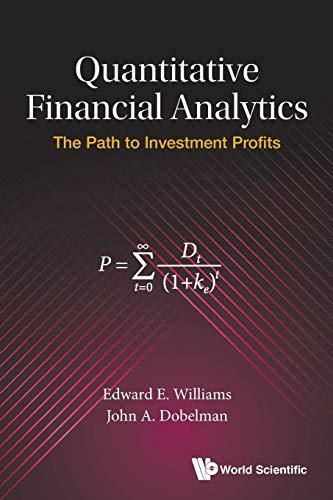Swed Help Save & 20 Dickinson Company has $11,860,000 million in assets. Currently half of these assets are financed with long-term debt at 9.3 percent and half with common stock having a par value of $8. Ms. Smith, Vice President of Finance, wishes to analyze two refinancing plans, one with more debt (D) and one with more equity (E). The company earns a return on assets before interest and taxes of 9.3 percent. The tax rate is 40 percent. Tox loss carryover provisions apply, so negative tax amounts are permissable. Under Plan D. a $2,965,000 milion long-term bond would be sold at an Interest rate of 11.3 percent and 370,625 shares of stock would be purchased in the market at $8 per share and retired. Under Plan E, 370,625 shares of stock would be sold at $8 per share and the $2,965,000 in proceeds would be used to reduce long- term debt. a. How would each of these plans affect earnings per share? Consider the current plan and the two new plans. (Round your answers to 2 decimal places.) Current Plan Plan D Plan E Earnings per share b-1. Compute the earnings per share if return on assets fell to 4.65 percent. (Negative amounts should be indicated by a minus sign. Round your answers to 2 decimal places.) Current Plan Plan D Plan E Eamings per share b-2. Which plan would be most favorable If return on assets fell to 4,65 percent? Consider the current plan and the two new plans. Plan D Plan E Current Plan b-3. Compute the earnings per share if return on assets increased to 14.3 percent. (Round your answers to 2 decimal places.) Current Plan Plan D Plan E Earnings per share -4. Which plan would be most favorable If return on ossets Increased to 14.3 percent? Consider the current plan and the two new plans. Plan E Plan D Current Plan 1.1 the market price for common stock rose to $10 before the restructuring, compute the earnings per share. Continue to assume that $2,965,000 million in debt will be used to retire stock in Plan D and $2,965,000 millon of new equity will be sold to retire debt in Plan E. Also assume that return on assets is 9.3 percent. (Round your answers to 2 decimal places.) Current Plan Plan D Plan E Eamings per share 1. If the market price for common stock rose to $10 before the restructuring, compute the earnings per share. that $2,965,000 million in debt will be used to retire stock in Plan D and $2,965,000 milion of new equity will be sold to retire debt in Plan E. Also assume that return on assets is 9.3 percent. (Round your answers to 2 decimal places.) Current Plan Plan D Plan E Earnings per share c-2. If the market price for common stock rose to $10 before the restructuring, which plan would then be most attractive? Current Plan Plan D Plan E Swed Help Save & 20 Dickinson Company has $11,860,000 million in assets. Currently half of these assets are financed with long-term debt at 9.3 percent and half with common stock having a par value of $8. Ms. Smith, Vice President of Finance, wishes to analyze two refinancing plans, one with more debt (D) and one with more equity (E). The company earns a return on assets before interest and taxes of 9.3 percent. The tax rate is 40 percent. Tox loss carryover provisions apply, so negative tax amounts are permissable. Under Plan D. a $2,965,000 milion long-term bond would be sold at an Interest rate of 11.3 percent and 370,625 shares of stock would be purchased in the market at $8 per share and retired. Under Plan E, 370,625 shares of stock would be sold at $8 per share and the $2,965,000 in proceeds would be used to reduce long- term debt. a. How would each of these plans affect earnings per share? Consider the current plan and the two new plans. (Round your answers to 2 decimal places.) Current Plan Plan D Plan E Earnings per share b-1. Compute the earnings per share if return on assets fell to 4.65 percent. (Negative amounts should be indicated by a minus sign. Round your answers to 2 decimal places.) Current Plan Plan D Plan E Eamings per share b-2. Which plan would be most favorable If return on assets fell to 4,65 percent? Consider the current plan and the two new plans. Plan D Plan E Current Plan b-3. Compute the earnings per share if return on assets increased to 14.3 percent. (Round your answers to 2 decimal places.) Current Plan Plan D Plan E Earnings per share -4. Which plan would be most favorable If return on ossets Increased to 14.3 percent? Consider the current plan and the two new plans. Plan E Plan D Current Plan 1.1 the market price for common stock rose to $10 before the restructuring, compute the earnings per share. Continue to assume that $2,965,000 million in debt will be used to retire stock in Plan D and $2,965,000 millon of new equity will be sold to retire debt in Plan E. Also assume that return on assets is 9.3 percent. (Round your answers to 2 decimal places.) Current Plan Plan D Plan E Eamings per share 1. If the market price for common stock rose to $10 before the restructuring, compute the earnings per share. that $2,965,000 million in debt will be used to retire stock in Plan D and $2,965,000 milion of new equity will be sold to retire debt in Plan E. Also assume that return on assets is 9.3 percent. (Round your answers to 2 decimal places.) Current Plan Plan D Plan E Earnings per share c-2. If the market price for common stock rose to $10 before the restructuring, which plan would then be most attractive? Current Plan Plan D Plan E










